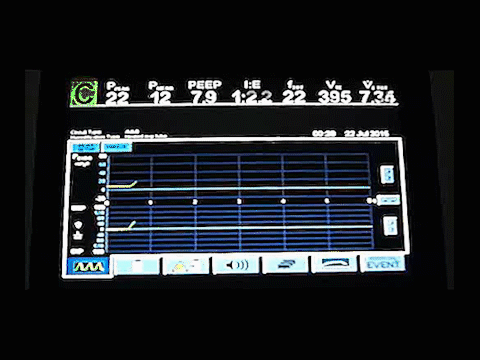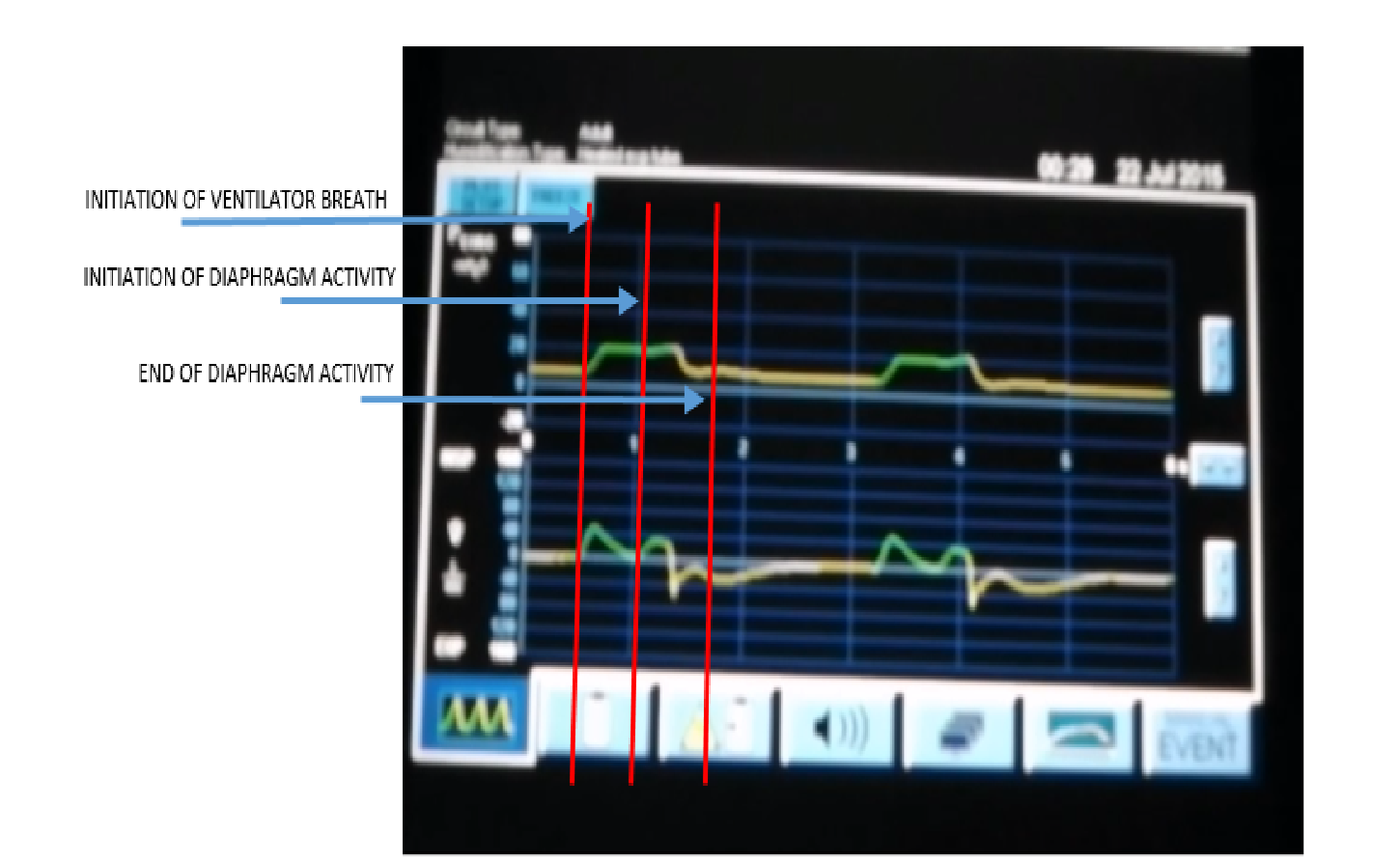An Equal and Opposite Reaction
Siddharth Dugar, MD
Critical Care Fellow, Cleveland Clinic, OH
Robert L. Chatburn, MHHS, RRT-NPN, FAARC
Professor, Department of Medicine
Lerner College of Medicine of Case Western Reserve University
Consider a 45 year old male with severe ARDS secondary to H1N1 influenza intubated for hypoxic respiratory failure. He is sedated to RAAS of -4 due to ventilator asynchrony.
His Ventilator settings are Pressure control A/C with RR 22/min, PEEP 8, FIO2 40%, Inspiratory time of 0.85 sec, Pressure rise time of 60% and inspiratory pressure of 12 cm H2O above PEEP.
What patient ventilator asynchrony is observed in the following Pressure/time and Flow/time waveforms?

- Delayed cycling
- Premature cycling
- Reverse triggering
- Double triggering
The patient ventilator asynchrony observed is reverse triggering with entrainment ratio of 1:1. It was recently described by Akoumianaki et. al. It is defined as a pattern in which the ventilator insufflation stimulates the diaphragm resulting in diaphragmatic contraction and respiratory effort.
In pressure control breaths, the asynchrony can be detected on the flow waveform. During passive inflation and deflation, the initial rise in flow is followed by a smooth decay until flow reaches zero or the preset inspiratory time is reached. In the case of reverse triggering, the breath is initially machine triggered but the diaphragm contracts (Pmus) during mid- inspiration. The resulting decrease in pressure below the target level (inspiratory pressure above PEEP) causes the ventilator to resume inspiratory flow as observed on the flow waveform, resulting in additional inspiratory volume. In the present case, the inspiratory effort also continues past the preset inspiratory time causing a distortion in the expiratory flow waveform in the positive direction during the first part of the expiratory phase. This is a form of premature cycling asynchrony because the ventilator has stopped providing assistance while the patient is still attempting to inspire. Akoumianaki et al found that all the patients who showed reverse triggering had a RASS score of -4 to -5. Sedation either promoted reverse triggering or made them more apparent. The phenomenon of reverse triggering was associated with diaphragm muscle fiber damage, and may result in double triggering and dangerous airway pressures in volume control, or inappropriately high tidal volumes in pressure control.

REFERENCE:
- Akoumianaki E, Lyazidi A, Rey N, Matamis D, Perez-Martinez N, Giraud R, Mancebo J, Brochard L, Marie Richard JC. Mechanical ventilation-induced reverse-triggered breaths: a frequently unrecognized form of neuromechanical coupling. Chest. 2013 Apr; 143(4):927-38.



